1. How will this come in OSPE
1.1. You will get and ECG
1.1.1. Give the diagnosis
1.1.2. What's the treatment
1.1.3. What's the mechanism
1.2. will not be asked about medication classes
2. Bradycardia
2.1. Sinus
2.1.1. P wave in front of QRS
2.1.2. causes
2.1.2.1. medications
2.1.2.1.1. beta blockers
2.1.2.1.2. CCB
2.1.2.2. Increased inter cranial pressure
2.1.2.2.1. Cushing's triade
2.1.2.3. hypothyroidism
2.1.3. Treatment
2.1.3.1. treat the cause
2.1.3.2. not symptomatic
2.1.3.2.1. no need for treatment, can happen in sleep or in athletes
2.1.3.3. symptomatic
2.1.3.3.1. Atropine
2.1.3.4. unstable
2.1.3.4.1. resuscitation
2.2. Not sinus (abnormal)
2.2.1. 1st degree heart block
2.2.1.1. PR constant and prolonged
2.2.1.1.1. normal range 3-5
2.2.1.2. No need for treatment
2.2.1.3. generally normal and has no significance, except if you want to use it as minor criteria for rheumatic fever
2.2.2. 2nd degree heart block
2.2.2.1. Mobitz type I (Wenchebach)
2.2.2.1.1. progressive prolongation of PR interval
2.2.2.1.2. clinically not significant, can be normal finding
2.2.2.1.3. NO treatment
2.2.2.2. Mobitz type II
2.2.2.2.1. significant and needs treatment
2.2.2.2.2. P wave alone with no pattern (not conducted to the ventricles to produce QRS)
2.2.2.2.3. no prolongation of PR
2.2.2.2.4. one of the indications for pacemaker
2.2.3. 3rd degree heart block
2.2.3.1. no relation between atria and ventricles, each are conducting separately
2.2.3.2. causes
2.2.3.2.1. congenital
2.2.3.2.2. acquired
2.2.3.3. management
2.2.3.3.1. symptomatic
2.2.3.3.2. not symptomatic
2.2.4. Asystole
2.2.4.1. Check if leads are connected first!! can detach with chest compression
2.2.4.2. give atropine and epinephrin
2.2.4.2.1. shock will kill the patient (it causes temporarily systole)
2.2.4.3. Do chest compressions
3. Tachycardia
3.1. Sinus
3.1.1. from SA node, but faster than normal
3.1.2. ECG characteristics
3.1.2.1. P wave precedes the QRS
3.1.2.2. PR interval constant
3.1.2.3. Normal P wave axis (0-90 degrees)
3.1.2.3.1. look at lead 1 and aVF
3.1.2.3.2. if it's positive in both it's normal axis
3.1.2.4. Normal P wave axis (0-90 degrees)
3.1.3. Sinus arrhythmia
3.1.4. Sinus tachycardia
3.1.4.1. What to do for him?
3.1.4.1.1. simply know the cause and treat it
3.1.4.1.2. Why is it fast?
3.1.5. Sinus arrhythmia
3.1.5.1. This is due inspiration and expiration
3.1.5.2. inspiration increases venous return and heart rate
3.1.5.3. normal finding, read about pathophysiology
3.2. Not sinus (abnormal)
3.2.1. atrial or ventricular
3.2.1.1. atrial
3.2.1.1.1. Supraventricular tachycardia (SVT)
3.2.1.1.2. Atrial flatter
3.2.1.1.3. Atrial fibrillation
3.2.1.2. ventricular
3.2.1.2.1. premature ventricular contraction (PVC)
3.2.1.2.2. Ventricular tachycardia
3.2.1.2.3. Ventricular fibrillation
3.2.1.2.4. Torsades de pointes
3.2.2. Narrow or wide QRS
3.2.2.1. Wide QRS
3.2.3. Mechanisms
3.2.3.1. Reentry
3.2.3.1.1. The impulse enters again to make one more contraction instead of ending after 1 contraction
3.2.3.1.2. nodal or due to accessory pathway outside the node (used anti grade or retrograde)
3.2.3.2. Abnormal automaticity
3.2.3.2.1. should be automatic normally, the SA node
3.2.3.2.2. if it's originated somewhere else other than SA node
3.2.3.3. Triggered activity
3.2.3.3.1. very rare
3.2.3.3.2. action potential initiates 2 or more contractions
3.2.3.3.3. example: Torsades de pointes
4. Other rhythm abnormality
4.1. Sick sinus syndrome
4.1.1. cause
4.1.1.1. myocarditis
4.1.1.2. postoperative
4.1.2. characteristic
4.1.2.1. tachycardia, then bradycardia
4.1.2.2. associated with syncope and arrest
4.2. Wondering SA node (wondering pacemaker)
4.2.1. P wave starts normal, then gradually PR interval and P wave morphology changes..
4.2.2. cause
4.2.2.1. myocarditis
4.2.2.2. postoperative
5. Treatment
5.1. Anti arrhythmic (reducing HR)
5.1.1. Pharmacological
5.1.1.1. non classified
5.1.1.1.1. adenosine
5.1.1.1.2. digoxin
5.1.1.2. 4 classes (Vaughn‐Williams)
5.1.1.2.1. Class 1: sodium channel blockers
5.1.1.2.2. Class 2: anti-sympathetic nervous system (most are beta blockers)
5.1.1.2.3. Class 3: potassium channel blockers
5.1.1.2.4. Class 4: calcium channel blockers
5.1.1.3. IMPORTANT
5.1.1.3.1. All are pro arrhythmic
5.1.1.3.2. Most affect LVF
5.1.1.3.3. worst is class 1c
5.1.2. Non Pharmacological
5.1.2.1. defibrillation
5.1.2.2. valsalva manoeuvre
5.1.2.3. carotid massage
5.1.2.4. ice bag on face for 10 seconds
5.2. increasing HR
5.2.1. Atropine
5.2.2. Epinephrine
